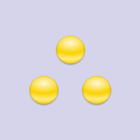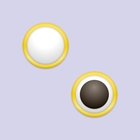Table of contents:
Gold: General Questions Gold Nanoparticle Processing- Previously I purchased Au nanoparticles in water from you but they can’t be spin-coated due to the low viscosity. Do you have Au nanoparticles in other suspensions which have higher viscosity, and thus are suitable for a spin-coating process?
-
Are there alternatives to spin coating that I can use to deposit a monolayer of nanoparticles?
- What is CTAB and why is its removal important?
- Why do other companies primarily sell CTAB coated nanorods?
- How do you confirm that there is not CTAB remaining on the nanorods?
- What is the shape purity of your gold nanorods?
- Why is the peak resonance wavelength in my nanorod sample different than the value on your specification sheet?
- Why is the hydrodynamic diameter listed on my CoA smaller than the TEM sizing values?
- I'd like a gold nanorod with a different resonance or a different surface. Are these available?
Gold: General Questions
Do you offer "bare" or "uncapped" gold nanoparticles?
We frequently receive inquiries from customers asked for nanoparticles with bare surfaces. It is important to recognize that all nanoparticles require some type of capping agent or stabilizer on the surface, as truly "bare" nanoparticles would remain stable for only a few seconds before irreversibly aggregating. This is because nanoparticles can be stabilized by two forces: electrostatic repulsion (capping agents are charged, and therefore nearby particles repel each other before van der Waals forces can pull them together), or steric repulsion (the capping agent is large enough that it physically gets in the way of van der Waals forces pulling them together.
However, our citrate and tannic acid capping agents are designed such that they can be displaced by other capping agents. Tannic acid nanoparticles are more stable than citrate coated nanoparticles at high concentrations, and tannic acid can be displaced by reactive groups with high affinity for the gold particle surface. Citrate capped nanoparticles are more stable than tannic capped nanoparticles in higher ionic strength solutions, and are the best choice when using physisorption for subsequent surface modification. For more information regarding our standard capping agents, please visit our Surfaces course listings.
Gold Nanoparticle Processing
Previously I purchased Au nanoparticles in water from you but they can’t be spin-coated due to the low viscosity. Do you have Au nanoparticles in other suspensions which have higher viscosity, and thus are suitable for a spin-coating process?
To spin coat a thin layer you have two choices. One option is to use a much higher concentration of gold nanoparticles. The viscosity won’t increase that much but there will be a larger number of particles in the thin layer of water that will then dry on the surface. Alternatively, the nanoparticles can be transferred to DMSO (cP ~2) which has a higher viscosity and will create a more uniform layer. More info can be found in our Knowledge Base article here.
Are there alternatives to spin coating that I can use to deposit a monolayer of nanoparticles?
Other methods to create monolayers on a surface include layer-by-layer (LbL) assembly, where nanoparticles with a negative or positive surface charge are exposed to a substrate with the opposite charge. By controlling the incubation time, the concentration of nanoparticles, and type of solvent and percent by weight of the applied nanoparticles on the surface can be controlled. More info can be found in our Knowledge Base article here.
Gold Nanoshells
The peak resonance wavelength of my nanoshells is not exactly at the wavelength advertised. Are these nanoshells out of specification and will this affect my experiment?
For gold nanoshells, our specification is that the OD at the advertised wavelength is at least 90% of the value of the peak OD. We set it this way to ensure that the particles are functionally equivalent between lots even if the peak wavelength varies slightly from the advertised wavelength. For example, if a gold nanoshell has a peak resonance and OD of 1.0 at 830 nm, the OD value at 800 nm should be at least 0.90.
Gold nanoshells have a relatively broad extinction peak, so even if the peak resonance is shifted from 800 nm, the material retains most of its absorption and scattering properties across a wide range of wavelengths. This is why nanoshells with peak wavelengths spanning 750–850 nm will perform nearly identically to a nanoshell with peak resonance at 800 nm.
Gold Nanorods
What is CTAB and why is its removal important?
Many nanorod synthetic recipes utilize a positively-charged surfactant, cetyl trimethylammonium bromide (CTAB), which forms a bilayer coating that strongly adsorbs to the gold nanorod surface. This bilayer is critical in forming the desired rod-shaped morphology due to it restricting growth normal to the {110} and {100} crystal lattice faces. The CTAB also provides stabilization through electrostatic repulsion in aqueous solutions due to its positive surface charge. Unfortunately, the positively charged CTAB molecules exhibit high levels of cytotoxicity – the degree to which a material is destructive towards cells – and is challenging to displace without destabilizing the nanorods. Thus, the same surfactant that is largely responsible for the anisotropic shape of the gold during growth also hinders its use in bio-applications and interferes with subsequent binding of molecules to the nanorod surface. In some cases, additional polymer layers can be added around the CTAB and used as an anchor for subsequent binding but for most applications it is preferable to bind directly to the gold surface.
Why do other companies primarily sell CTAB coated nanorods?
Attempts by others to remove the CTAB bilayer have had limited success yielding aggregated nanorods, only partially exchanged surfaces, or capping over the CTAB bilayer with another agent. NanoComposix has been able to solve this problem through a specialized surface exchange protocol. Utilizing this protocol we are able to displace the CTAB bilayer and ultimately replace it with a citrate capping agent that keeps the gold nanorods stable in aqueous solution. With a citrate stabilized surface, standard surface binding techniques can be utilized to generate a variety of surfaces.
How do you confirm that there is not CTAB remaining on the nanorods?
We are able to prove that we have displaced the CTAB by using Matrix-Assisted Laser Desorption/Ionization Time of Flight Mass Spectrometry (MALDI-TOF MS) analysis and monitoring the intensity of the bromine peaks found in the CTAB. Bromine has two naturally occurring isotopes. One of the isotopes has a molecular weight of 79 and an abundance of 50.52%. The other isotope has a molecular weight of 81 and an abundance of 49.48%. Therefore, these two peaks appear next to each other at similar intensity levels on the MADLI-TOF spectrum. A half-log serial dilution was made and analyzed with decreasing concentrations of CTAB correlating to decreasing bromine peak intensities. Our citrate capped gold nanorods were then analyzed and compared against the serial dilution curve. Using this method we found that the CTAB concentration of our citrate capped gold nanorods has been reduced down to a concentration below 10 uM. Samples were also sent off-site for independent analysis using Direct Sample Analysis Time of Flight Mass Spectrometry (DSA-TOF MS). This independent analysis also confirmed that the CTAB levels were undetectable in the sample.
What is the shape purity of your gold nanorods?
The shape purity of our nanorods depends on the peak plasmon resonance of the nanorod. Typical shape purities for our 660 nm, 800 nm, and 980 nm resonant nanorods are 95%, 90%, and 80%, respectively.
Why is the peak resonance wavelength in my nanorod sample different than the value on your specification sheet?
At the nanoscale, the size and shape of particles can change over time. Typically this is due to reorganization of the atoms within the particle or due to a process call Ostwald ripening where atoms are released from particles with high curvature (very small particles or shaped particles) and those atoms redeposit on other particles. Since the plasmon resonance is so sensitive to aspect ratio, even low rates of Ostwald ripening can cause a noticeable shift in the peak resonant wavelength. At nanoComposix, we guarantee that the supplied nanorods will have at least 90% of their peak absorbance at the specified wavelength.
Why is the hydrodynamic diameter listed on my CoA smaller than the TEM sizing values?
Unlike DLS measurements of spherical nanoparticles, the reported hydrodynamic diameter of gold nanorods does not provide a direct measure of either the nanorod diameter or length. Literature reports suggest that the measured value corresponds to a rotational diffusion of the nanorods, rather than a translation diffusion of the nanorods through the bulk solution. The DLS measurements of the nanorods are still useful for confirming that the particles are well dispersed in solution and unaggregated, as the presence of strongly-scattering aggregates would significantly increase the reported hydrodynamic diameter and indicate that the nanorods have become destabilized. A hydrodynamic diameter in the 5–25 nm range is normal and can also depend on the resonance and surface.
I'd like a gold nanorod with a different resonance or a different surface. Are these available?
We can make nanorods with resonant wavelengths from 600 nm–1100 nm and with any of our standard surface coatings (citrate, PVP, lipoic acid, BPEI, PEG, silica shelled). In addition, we can covalently bind antibodies or other targeting molecules to the surface. Please contact us for a quote for a custom nanorod wavelength or surface coating.




